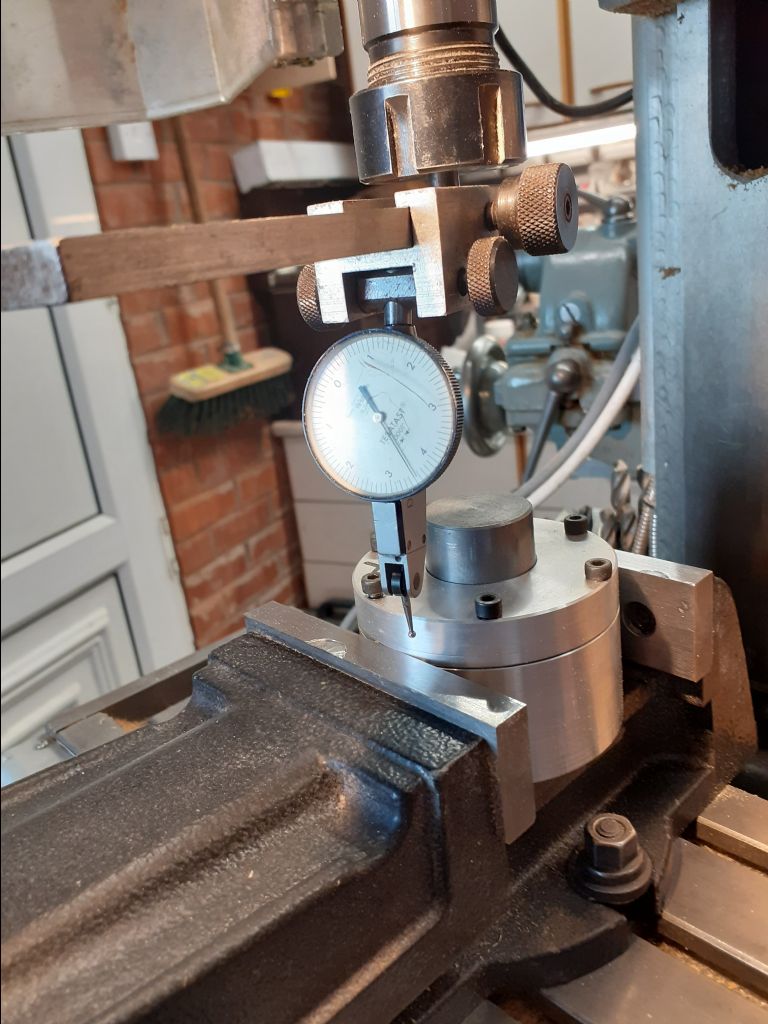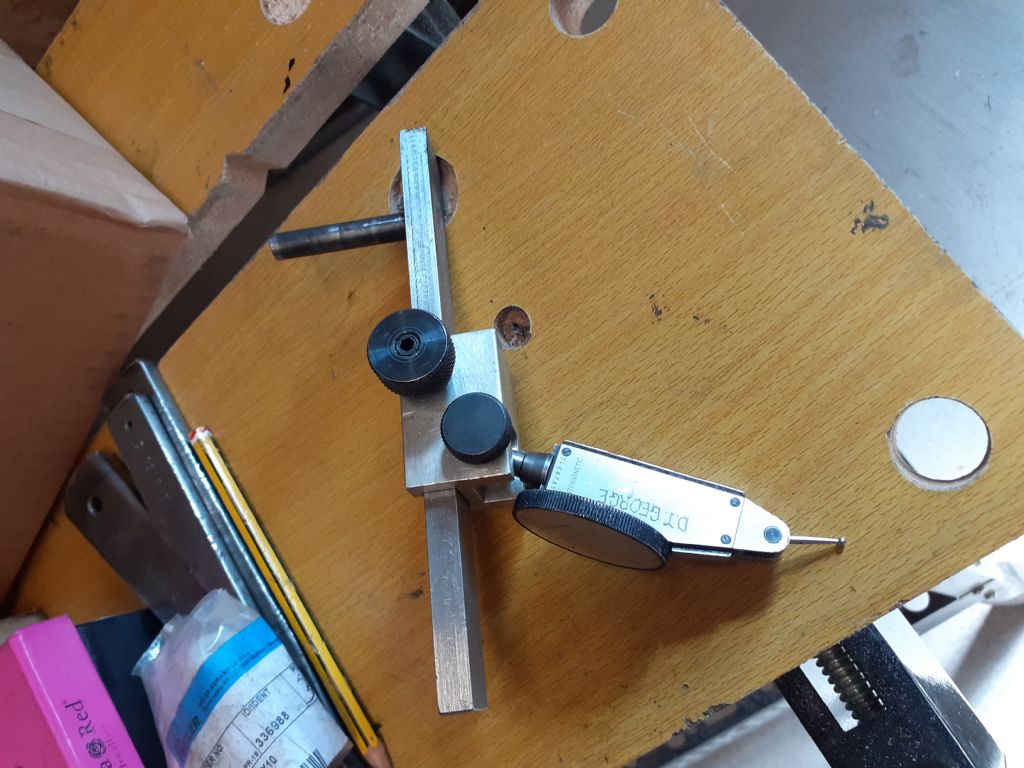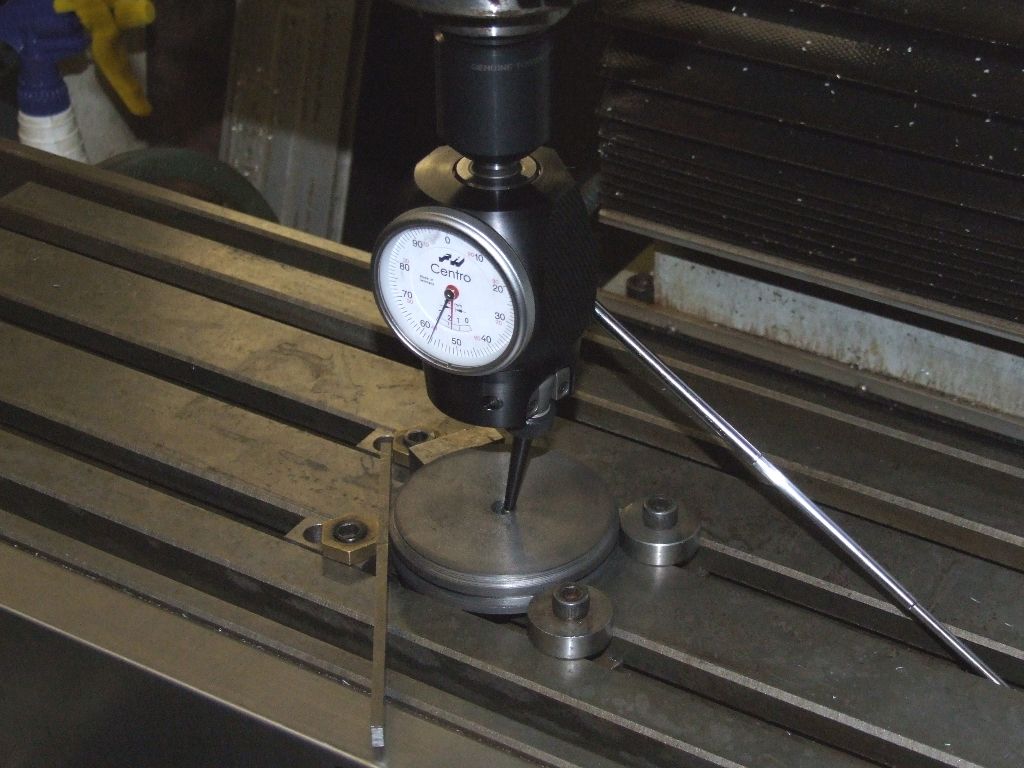Further to the link from John Haine about Osbornes Maneuver Marv Klotz has a useful comment for those folk using a single dial gauge / indicator on an offset arm. The disadvantage of this method has always been the difficulty of seeing whats going on round the back.
But Marv says :-
"An added mathematical insight…
If you're centering conventionally, i.e. by rotating a DTI around the stock until you get the same reading at +/- X, +/-Y there's no reason to check -Y which may have the DTI dial facing away from you.
Given cylindrical stock, there's no way you can have the same reading at +/-X and +Y and not have the same reading at -Y."
Dead right and totally obvious but something neither I, or any one I'd met, had managed to think of in over 40 years. You'd have thought it would have made it into a textbook but the ones I've seen suggest mirrors to see behind. Which drove me nuts in nothing flat so I splurged £50 pretty much immediatley the import co-axial meters came on the scne and have never looked back.
Worth noting that with DRO boxes its easy to use the X feed to butt up against a stiff rod in the chuck on both sides at some random Y axis position close to, but behind the centre line, so the DRO 1/2 function gives the X centre line. Knowing the X centre a similar butting up move on the front lets you derive the Y centre line from the measured diameter of the work and the butting up rod.
When using these butting up techniques trapping a 1 thou feeler or piece of dry cigarette paper between rod and stock so its just stiff to pull out is a very sensitive technique for judging position. Probably tenths thou single sided errors and far less double sided becuase the errors subtract.
Clive
Howard Lewis.







